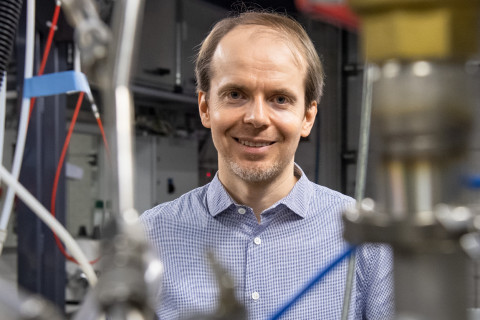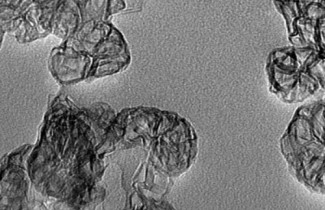“Combustion processes generate air pollution that has an impact on human health and the environment everywhere around the world,” Professor in Emissions of Combustion Processes Olli Sippula says.
The world’s energy production is still largely reliant on combustion processes, and the scale of these processes is very broad. Small-scale sources of emissions include, for example, residential fireplaces and small machinery, whereas power plant boilers and industrial processes release emissions on a larger scale.
“There are differences in the regulation of combustion processes. In Europe, for example, emissions from road transport and large boilers are regulated very strictly, while in some sectors regulation is virtually non-existent.”
“The public debate often focuses on the greenhouse gas emissions caused by combustion processes, but aerosol emissions, too, have a significant impact on the climate. In addition, aerosol particles have a significant impact on air quality and, consequently, human health. These effects are still relatively poorly known,” Sippula says.
At the moment, researchers of combustion processes are interested in soot particles formed during combustion. This soot is known as black carbon, and it absorbs sunlight both in the atmosphere and on the surface of snow and ice. Soot particles and other fine particles in the ambient air have also been identified as a significant health risk.
“We want to know how much black carbon is formed in different processes and how efficiently those particles absorb sunlight. Black carbon is estimated to be a very significant climate-warming emission component, especially in northern areas where it darkens snow and ice, causing them to melt faster. However, combustion-derived particles can also scatter sunlight and have an impact on cloud formation, causing climate-cooling effects.”
“The life span of black carbon in the atmosphere is a couple of weeks. In addition to emission factors, we study the physicochemical properties of particles produced by different combustion processes, and how they evolve in the atmosphere. The optical properties of soot particles change in the atmosphere, creating uncertainty in the assessment of their climate effects. We are also looking for ways to reduce black carbon emissions, for example, by developing new kinds of particle emission reduction methods for residential biomass combustion.”
“In addition, we examine which compounds harmful to health are contained in combustion-derived particles, and we are collaborating with toxicology researchers to assess the harmfulness of emissions. The goal is to identify the emission components that cause the most adverse effects on health.”
There is no quick solution to energy production
The environment and technology have been important themes of research throughout Sippula’s career.
“The effects of combustion processes on the climate and human health are significant. They cause diseases everywhere in the world and shorten people’s life expectancy. Climate change increases forest fires and, as a result, also emissions into the atmosphere,” he says.
“In the Western countries, the need to reduce emissions from energy and transport has been recognised, but globally, combustion is just increasing. I don’t think we’ll find a quick solution to switching to non-combustion-based energy production, so we need new emission control technologies, especially for residential combustion, which is one of the most important sources of particulate emissions globally.”
“Of course, legislation has a role to play here. Emission limits set by legislation create markets for low-emission technologies and guide industries to develop new ones.”
“Emission measurement studies carried out in our laboratory are generally long, extensive and international.”
“We started joint measurement campaigns with European research partners more than ten years ago. High-level laboratory infrastructure and international networks play a key role in enabling us to carry out versatile emission studies,” says Sippula, who is also the current director of the ILMARI Aerosol Physics, Chemistry and Toxicology Research Unit.
“Our consortium will continue to do research on the emissions caused by different modes of transport. We quantify and characterize ultrafine particles emitted by passenger cars, heavy-duty vehicles, ships and aircraft engines, and study their health effects.”
“Together with industrial partners, we investigate work-related exposure to exhaust particles and, for example, study emissions from power plants as well as their emission control technologies. We wish to continue our collaboration with companies, e.g., in research addressing emissions and filtration technologies, as well as in the development of emission measurement techniques.”
For further information, please contact:
Olli Sippula, tel. +358 40 355 3397, [email protected], https://uefconnect.uef.fi/en/person/olli.sippula/
Print-quality photos: photo1 and photo2
***
Olli Sippula appointed as Professor in Emissions of Combustion Processes at the University of Eastern Finland, 1 March 2022 -
PhD, Environmental Science, University of Eastern Finland, 2010
MSc (Technology), Environmental Protection Technology, University of Oulu, 2004
Title of Docent in Chemistry of Combustion Aerosols, University of Eastern Finland, 2016 -
Key roles
Associate Professor (tenure track), Emission Chemistry of Combustion Processes, University of Eastern Finland, 2018–2022
Research Manager/ Project Manager, University of Eastern Finland, 2015–2018
Academy of Finland Postdoctoral Researcher, University of Eastern Finland, 2012–2015
Visiting Researcher, University of Rostock, Germany, 2012-2013
Currently ongoing research projects (PI role):
- Black and Brown Carbon in the Atmosphere and the Cryosphere (BBrCAC) 2021-2025, funded by the Academy of Finland.
- Ultrafine Particles from Transportation - Health Assessment of Sources (ULTRHAS), Horizon 2020 project, 2021-2025, funded by the European Commission.
- Reduction of Workers’ Exposure to Carcinogenic Air Pollutants in Mining Environments (TASK), 2021-2023, funded by the Finnish Work Environment Fund and companies.
ILMARI – Aerosol Physics, Chemistry and Toxicology Research Unit https://sites.uef.fi/ilmari/



